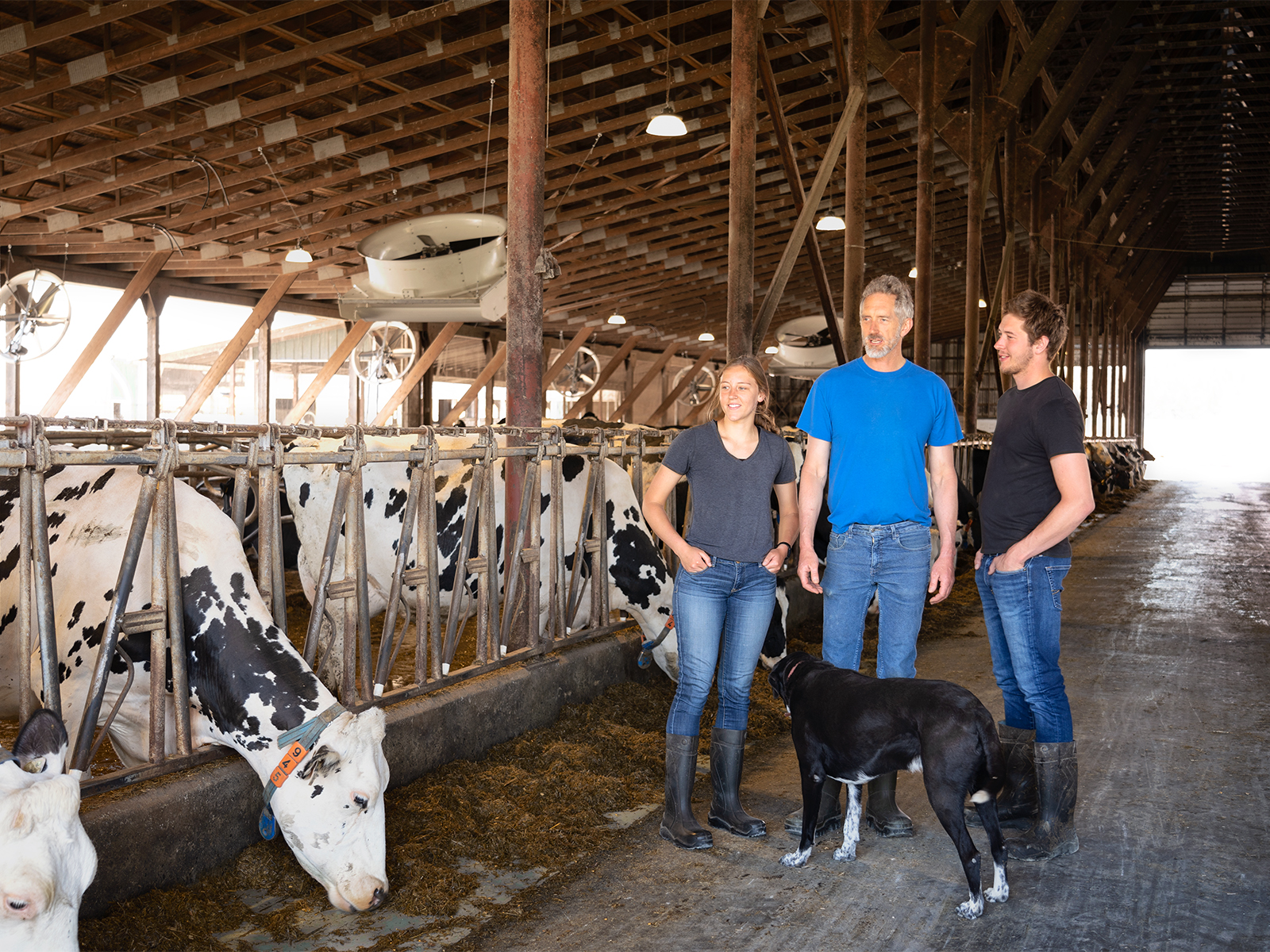Published October 18, 2024 • 3 Min Read
With the right tools, expertise, and resources, creating a formal succession plan can help you smoothly transition the ownership or management of your farm to the next generation while ensuring the long-term success of your operation.
If succession planning is on your mind, you’re not alone. According to a 2023 RBC Report1 on farming labour renewal in Canada, the average age of Canadian farm operators is steadily increasing. This trend places agriculture on the cusp of one of the biggest labour and leadership transitions in the country’s history, as many farmers are slowing down and preparing to pass on their responsibilities.
With so many family operations facing transitions in management or ownership, questions about the farm’s future, how to protect and ensure a legacy, and streamline retirement loom large for many Canadian producers.
Having a formal succession plan can help you navigate these complex transitions smoothly and plan the future you want for yourself, your family, and your business.
What is a succession plan, and why are they useful?
Though selling your physical assets may seem straightforward, transferring ownership or management responsibilities can be a multi-faceted puzzle. So, whether you’re planning to step away gradually or exit to pursue a new venture, it’s essential to have a plan.
Simply put, a succession plan clearly outlines your intentions for the future transition of your family or business, ensuring a smooth and successful shift toward your long-term goals. It can help you:
-
provide financial security for your future and ensure prosperity for the next generation;
-
manage your wealth and minimize tax liability;
-
outline intentions for transferring assets and strive for fairness among family members;
-
identify external players needed to help with transition plans and strategy, and;
-
give you a written framework for resolving disputes.
If succession planning is on the minds of most producers, why does only 1 in 12 producers have one?
Much of it boils down to the fact that the day-to-day demands of running an operation can take precedence over long-term planning, not to mention the foreboding feelings many producers have about starting tough conversations with family members or successors.
Combine that with the fact that producers often lack access to the professional expertise and resources they need to navigate what can feel like a complex and costly process, and it’s not surprising that “66% of farmers do not have a formal succession plan in place, leaving the future of farmland in doubt.1
Ready to take the first step? 10 steps to move toward the future you want.
Recognizing the hurdles many of today’s producers face in succession planning, we’re committed to simplifying the process and connecting farmers with the expertise and information they need to move forward confidently.
RBC’s Farm Succession Planning Guide provides an overview of 10 key areas you may have to navigate in the coming years as you begin to plan your succession.
No matter where you are on your succession-planning journey, this guide will help you start conversations with key players, think about the necessary records and documents, consider future income needs and tax impacts, and get a positive start on ensuring prosperity for those who are most important to you through future generations.
Get in touch with an RBC agriculture relationship manager to hear how we can help you with your operations succession plan.
1 https://thoughtleadership.rbc.com/farmers-wanted-the-labour-renewal-canada-needs-to-build-the-next-green-revolution/
This article is intended as general information only and is not to be relied upon as constituting legal, financial or other professional advice. A professional advisor should be consulted regarding your specific situation. Information presented is believed to be factual and up-to-date but we do not guarantee its accuracy and it should not be regarded as a complete analysis of the subjects discussed. All expressions of opinion reflect the judgment of the authors as of the date of publication and are subject to change. No endorsement of any third parties or their advice, opinions, information, products or services is expressly given or implied by Royal Bank of Canada or any of its affiliates.
Any information, opinions or views provided in this document, including hyperlinks to the RBC Direct Investing Inc. website or the websites of its affiliates or third parties, are for your general information only, and are not intended to provide legal, investment, financial, accounting, tax or other professional advice. While information presented is believed to be factual and current, its accuracy is not guaranteed and it should not be regarded as a complete analysis of the subjects discussed. All expressions of opinion reflect the judgment of the author(s) as of the date of publication and are subject to change. No endorsement of any third parties or their advice, opinions, information, products or services is expressly given or implied by RBC Direct Investing Inc. or its affiliates. You should consult with your advisor before taking any action based upon the information contained in this document.
Furthermore, the products, services and securities referred to in this publication are only available in Canada and other jurisdictions where they may be legally offered for sale. Information available on the RBC Direct Investing website is intended for access by residents of Canada only, and should not be accessed from any jurisdiction outside Canada.
Share This Article






